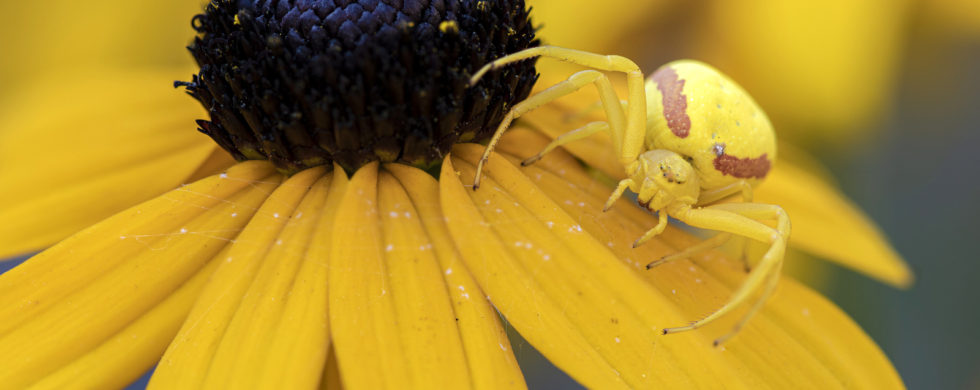
31
2020Beeware!
Shot of the Month – October 2020
By 2020 I imagine that most people have heard about the bumble bee crisis — this vital insect has been declining rapidly in the last 30 years due to the use of pesticides, climate change, and loss of habitat. Bumble bees are essential pollinators and without them, many ecosystems may collapse not to mention the 15 billion dollar agricultural industry which needs them for pollinating crops.
If those challenges weren’t daunting enough the poor fuzzy bee must also take care to avoid the Goldenrod Crab Spider (GCS), shown above, as they are particularly fond of dining on bees and wasps.
The GCS can typically be found hiding on an assortment of yellow or white colored plants though they can be occasionally found on purple thistles and asters and plants of other hues. Preferred hunting perches include milkweed, trillium, white fleabane, ox-eye daisy, red clover, butter cups, and, of course, golden rod to name a few. I found the lovely female GCS above in our garden on a black-eyed Susan in late summer.
The body of the GCS is naturally white though if she is hunting on a yellow flower she can change her body color with an incredible level of accuracy to match the color hue of the plant. The color transformation is not automatic and going from white to yellow takes between 10-25 days while converting back to white only takes about 6 days.
I found this white GCS on a sunflower in a different part of the garden:
Crab spiders get their common name from their tendency to hold their front legs aloft like crabs (like in the image above), and their ability to run sideways as well as frontwards and backwards. These spiders do not spin a web to catch their prey but rather are ambush predators. The spider will sit patiently on the flower until an insect comes too close and then she will snap those legs around the body of the prey as she sinks her fangs into the victim and injects them with a paralyzing venom. Sometimes the spider will try and blend in while other times, if there is a color mismatch, she may sit in the middle of the flower imitating the blossom.
A honeybee in the grasp of a Goldenrod Crab Spider: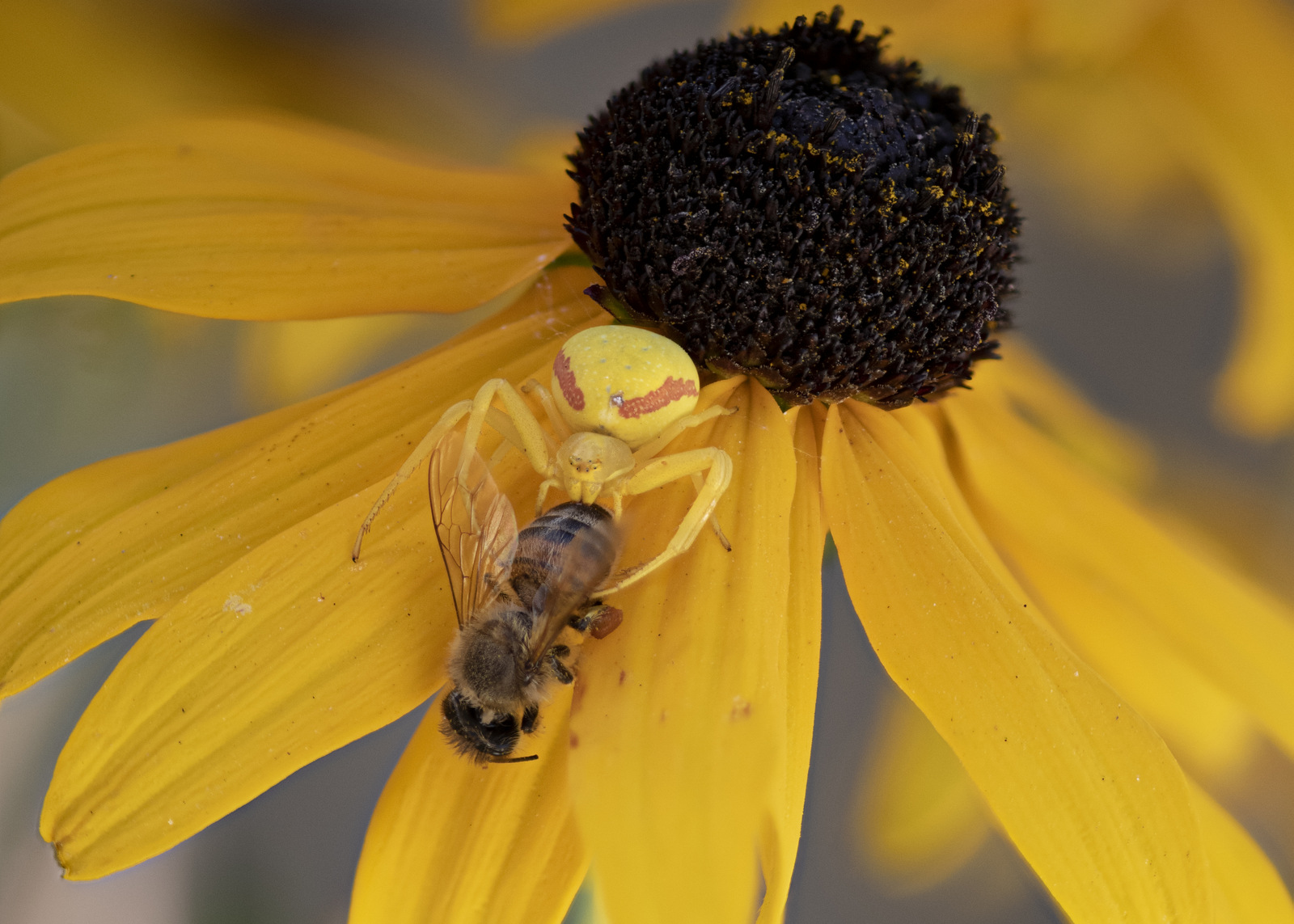
Female GCS range in size from 1/4” to a bit more than 1/3″ (body length only). Males are smaller and range from 1/10″ to 1/6″ in size. During the bounty of summer, these spiders will eat just about any insect including flies, bees, butterflies, grasshoppers, dragonflies, and hoverflies. However, by late summer and fall most species of bees have died off and many insects are gone. Except for bumble bees. They continue to thrive and they are the primary visitors to the now-blooming fields of goldenrod, thistle, and other late-blooming flowers. They also become the primary prey for the GCS. During the fall, goldenrod-filled meadows become killing fields and are littered with the bodies of common eastern bumble bees.
Pollinating is a dangerous business…
Here you can see a live hunt in action (link). (Volume up for full effect!)
Bee safe out there. Until next month….m
Sources:
Sharp-Eatman Nature Photography
Nikon D850, Nikon 105mm, f/6.7, 1/30 sec, ISO 64, 3 shot focus stack

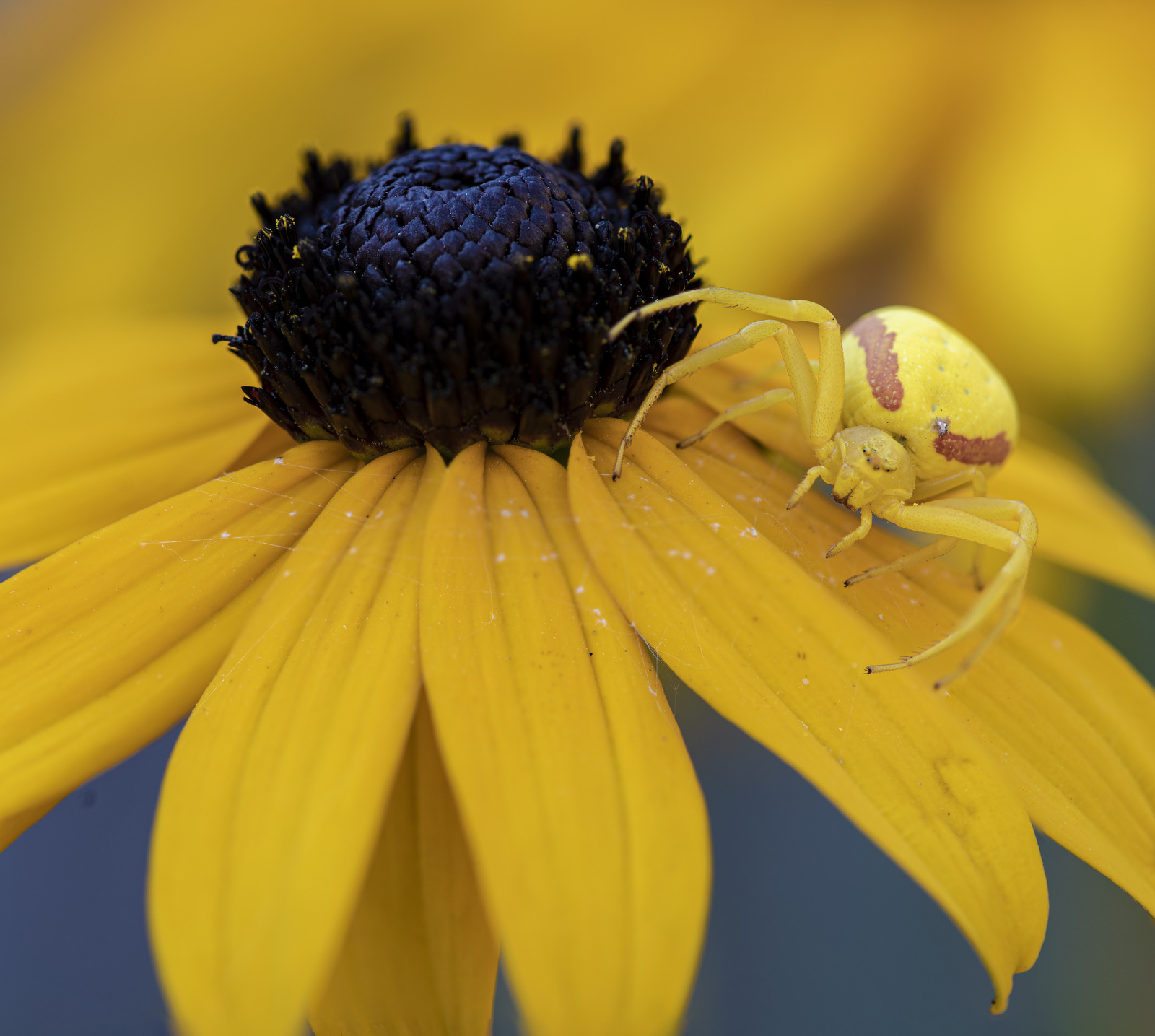
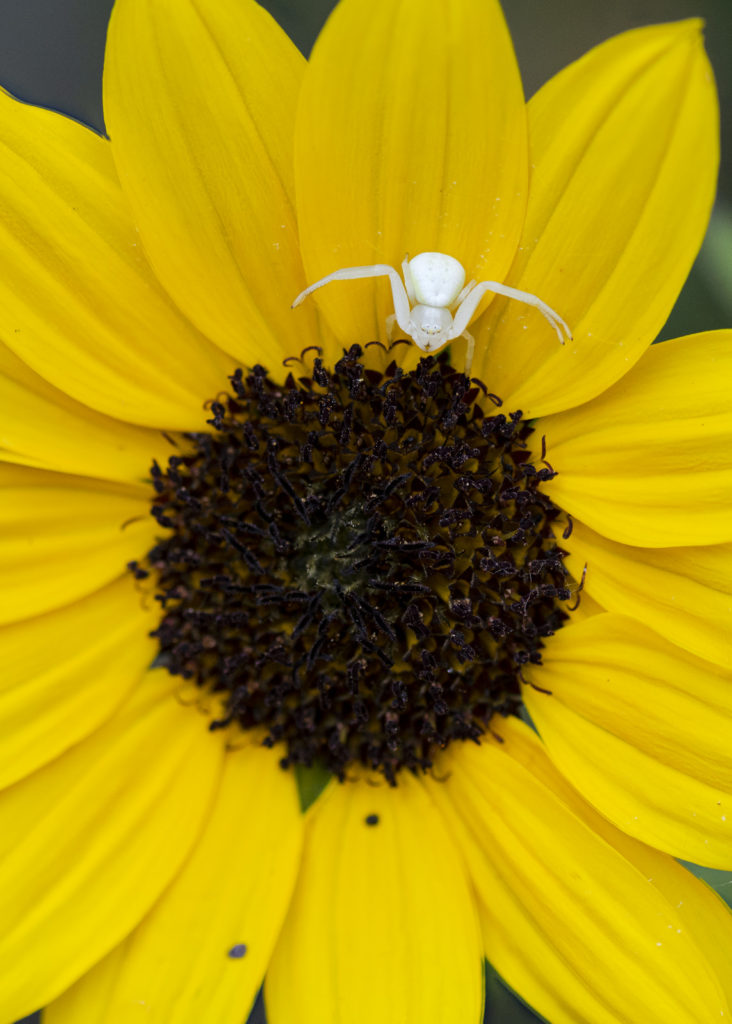
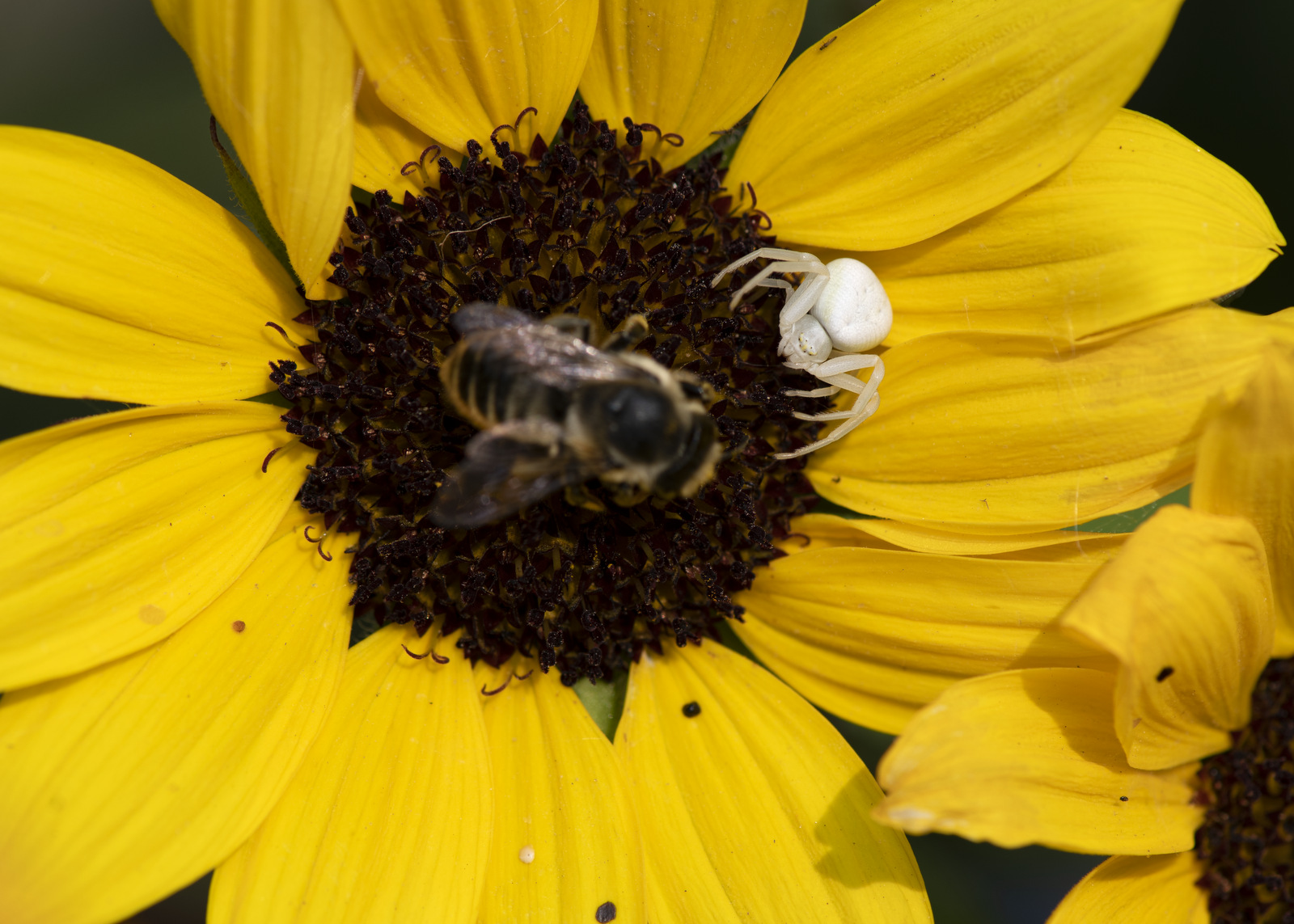
Nancy Rupp
Thanks! Glad for your photos and knowledge.
Enjoy the holidays!
Safe travels.
10 for 20 @ Michael Despines Photography
[…] Here we have another ferocious predator, albeit, on the other end of the size spectrum. I shot this beauty in our garden. […]